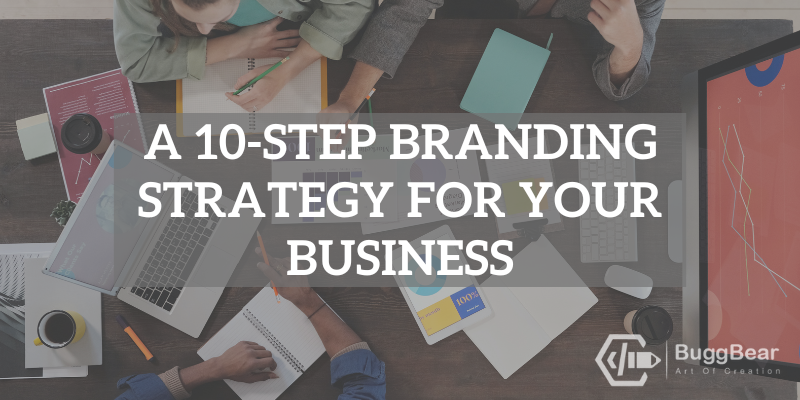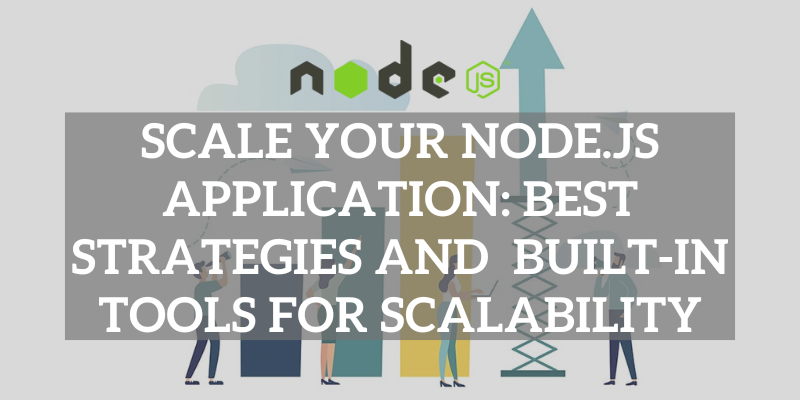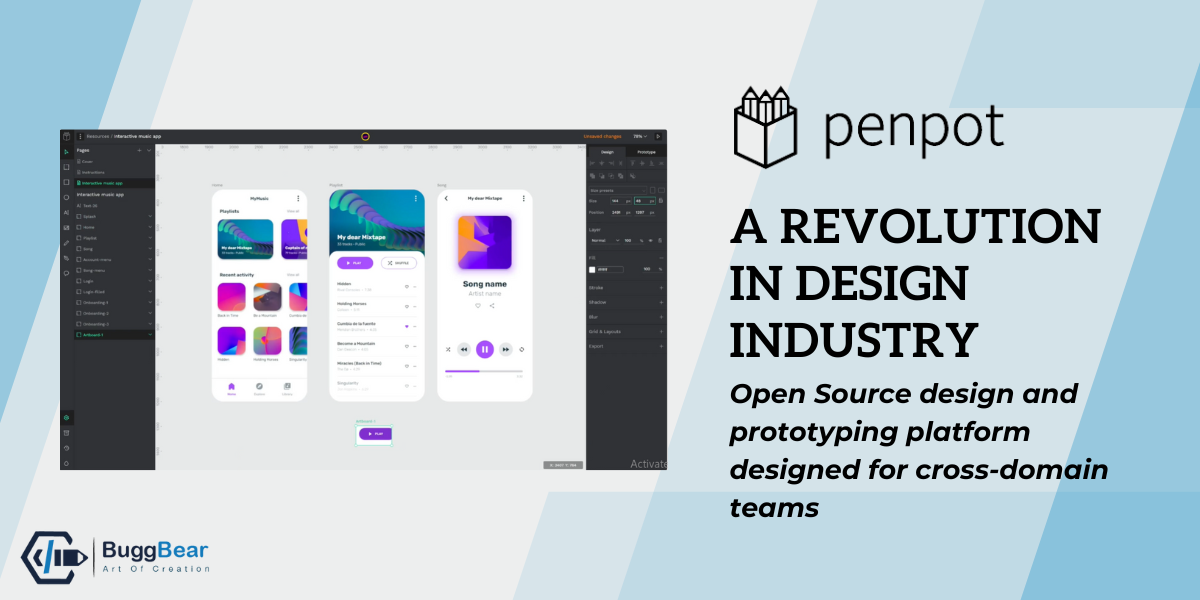What is Brand Development?
Branding is the process of creating and strengthening your professional services brand. Because we help companies develop their brands, we divide the process into three phases.
- The first stage is getting your branding strategy right and aligning with your business goals.
- The second is to develop all the tools you will need to communicate your brand, such as your logo, tagline and website.
- Finally, there is the phase of strengthening your newly developed or updated brand.
Your brand development strategy is how you accomplish these tasks. To make this task a little easier for you, we've broken down your branding strategy into 10 steps.
Your Brand Defined
A professional services brand is best understood as your company's reputation and visibility in the marketplace. The strength of your brand can be measured as Reputation X Visibility.
There is also another important dimension of your brand: how relevant it is to your target clientele. More on that later.
Brand Development Strategy
These are the 10 steps to develop a strategy for your brand
1. CONSIDER YOUR OVERALL BUSINESS STRATEGY
A strong and well-differentiated brand will greatly facilitate the growth of your business. But what type of business do you want? Do you plan to grow organically? Your overall business strategy is the context for your branding strategy, so that's where to start. If you are clear about where you want to take your business, your brand will help you get there.
2. IDENTIFY YOUR TARGET CLIENTS.
Who are your target clients? If you say "everyone", you are making a big mistake. Our research clearly shows that high-growth, high-profit firms focus on having clearly defined target clients. The narrower the focus, the faster the growth. The more diverse your target audience, the more diluted your marketing efforts will be. So how do you know that you have chosen the right target group of clients? This is where the next step comes in.
3. RESEARCH YOUR TARGET CUSTOMER GROUP.
Businesses that systematically research their target group of clients grow faster and are more profitable (see figure below). In addition, those who conduct research more often (at least once a quarter) grow even faster.
Research helps you understand your target client's perspective and priorities, anticipate their needs, and express your message in language that resonates with them. It will also tell you how they view the strengths of your business and your current brand. As such, it dramatically reduces the marketing risk associated with brand development.

4. DEVELOP YOUR BRAND POSITION.
You are now ready to determine your firm's brand position in the professional services market (also called market position). What makes your company different from others and why should potential clients in your target group choose to work with you?
A positioning statement is usually three to five sentences long and captures the essence of your brand's position. It has to be based on reality because you will have to deliver on what you promise. It also needs to be somewhat aspirational so that you have something to strive for.
5. DEVELOP YOUR MESSAGING STRATEGY.
The next step is a messaging strategy that translates your brand positioning into messages for different audiences. Your target audiences typically include potential clients, potential employees, referral sources or other influencers, and potential partner opportunities, just to name a few of the usual suspects.

While your core brand positioning must be the same for all audiences, each audience will be interested in different aspects of it. The message will emphasize the most important points to each audience. Each audience will also have specific concerns that need to be addressed, and each will need different types of evidence to support your messages. Your messaging strategy should address all of these needs. It is an important step in making your brand relevant to your target audience.
6. DEVELOP YOUR NAME, LOGO AND TAGLINE.
For many companies, a name change is not necessary. But if you're a new business, going through a merger, or burdened with a name that no longer suits your position, a name change may be in order. Even if you don't change the name of your business, a new logo and tagline may make sense to better support your brand position.
Remember that your name, logo and slogan are not your brand. They are part of your brand identity, ways to communicate or symbolize your brand. You have to live it to make it real.
And don't make the mistake of showing the new logo internally to gain consensus. The name, logo and slogan are not for you. They are for your market and should be judged on how well they communicate, not how much partners like them.
7. DEVELOP YOUR CONTENT MARKETING STRATEGY.
We could call this step "develop your marketing strategy". But we didn't. Instead, we call for a content marketing strategy.
Why? Content marketing is especially suitable for professional service firms in the Internet age. It does everything traditional marketing does, but it does it more effectively. It uses valuable educational content to attract, nurture and qualify leads.
Remember that the power of your brand is driven by both reputation and visibility. Increasing visibility alone without strengthening your reputation is rarely successful. This is why traditional "awareness building" advertising or sponsorships so often produce disappointing results. On the other hand, content marketing increases visibility and reputation at the same time. It is also a perfect way to make your brand relevant to your target audience. Case closed.
Reference: Leadership vs Content Marketing by Lee Frederiksen
8. DEVELOPMENT OF YOUR WEBSITE.
Your website is your most important brand development tool. It's where all your viewers turn to find out what you do, how you do it, and who your clients are. Potential clients probably won't choose your business based on your website alone. However, they can ban you if your website sends the wrong message.

In addition, your website will be the home of your valuable content. This content will become the focus of your search engine optimization (SEO) efforts so that your potential customers, potential employees, and referral sources find you and learn about your business. Online content is central to any modern brand development strategy.
These days, professional services websites come in two varieties. The first is a branding website. Such a page tells your story and communicates who you are, who you serve and what you do. In short, it conveys your brand message. The second option does the above and also generates and nurtures potential new clients. We call these websites high performing.
9. BUILD YOUR MARKETING TOOLKIT.
The next step in the process is to build the rest of your marketing toolkit. This may include one-page "sales sheets" that describe core service offerings or key markets served. In addition, there can be a brief "pitch deck" that provides an overview of the business or key offerings, and an e-brochure about the business. These are rarely printed pieces.
Increasingly, this marketing toolkit also includes videos. Popular videos include company overviews, case studies or "meet the partner" videos. Key service offers are also very useful. If these tools are properly prepared, they not only serve to develop the business, but are also important for the development of the brand.
10. IMPLEMENTATION, MONITORING AND ADJUSTMENT.
This last step in the brand development process can be one of the most important. Obviously, a winning brand development strategy won't do much good if it's never implemented. You might be surprised how often this happens. A solid strategy is developed and launched with all the good intentions the business can muster. Then reality hits. People are busy working with clients and brand development tasks are postponed... and then forgotten.
That's why tracking is so important. We strongly recommend monitoring the implementation of the plan and the results. Was the strategy implemented as planned? What happened to objective metrics like search traffic and website visitors? How many new leads, job applications and partnership opportunities were generated? Only by following the entire process can you be sure that you are making the right conclusions and making the right adjustments.
Note: Instead of these hectic efforts, you can just contact us and we'll take care of your brand.
Category:
Brand Development
Tags:
Branding
C-Suit Topics
Mergers & Acquisitions
Strategy
Any Industry
Published at:
September 16, 2022





